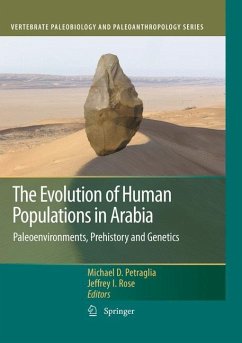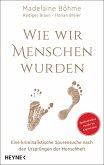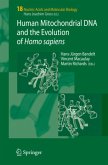This book examines the evolution of human populations in Arabia. Coverage includes environmental change and its impact on human populations, the movement and dispersal of populations, and the origin and spread of food producing economies.
The romantic landscapes and exotic cultures of Arabia have long captured the int- ests of both academics and the general public alike. The wide array and incredible variety of environments found across the Arabian peninsula are truly dramatic; tro- cal coastal plains are found bordering up against barren sandy deserts, high mountain plateaus are deeply incised by ancient river courses. As the birthplace of Islam, the recent history of the region is well documented and thoroughly studied. However, legendary explorers such as T.E. Lawrence, Wilfred Thesiger, and St. John Philby discovered hints of a much deeper past during their travels across the subcontinent. Drawn to Arabia by the magnifcent solitude of its vast sand seas, these intrepid adventurers learned from the Bedouin how to penetrate its deserts and returned with stirring accounts of lost civilizations among the wind-swept dunes. We now know that, prior to recorded history, Arabia housed countless peoples living a varietyof lifestyles, including some of the world's earliest pastoralists, c- munities of incipient farmers, fshermen dubbed the "Ichthyophagi" by ancient Greek geographers, and Paleolithic big-game hunters who were among the frst humans to depart their ancestral homeland in Africa. In fact, some archaeological investigations indicate that Arabia was inhabited by early hominins extending far back into the Early Pleistocene, perhaps even into the Late Pliocene.
The romantic landscapes and exotic cultures of Arabia have long captured the int- ests of both academics and the general public alike. The wide array and incredible variety of environments found across the Arabian peninsula are truly dramatic; tro- cal coastal plains are found bordering up against barren sandy deserts, high mountain plateaus are deeply incised by ancient river courses. As the birthplace of Islam, the recent history of the region is well documented and thoroughly studied. However, legendary explorers such as T.E. Lawrence, Wilfred Thesiger, and St. John Philby discovered hints of a much deeper past during their travels across the subcontinent. Drawn to Arabia by the magnifcent solitude of its vast sand seas, these intrepid adventurers learned from the Bedouin how to penetrate its deserts and returned with stirring accounts of lost civilizations among the wind-swept dunes. We now know that, prior to recorded history, Arabia housed countless peoples living a varietyof lifestyles, including some of the world's earliest pastoralists, c- munities of incipient farmers, fshermen dubbed the "Ichthyophagi" by ancient Greek geographers, and Paleolithic big-game hunters who were among the frst humans to depart their ancestral homeland in Africa. In fact, some archaeological investigations indicate that Arabia was inhabited by early hominins extending far back into the Early Pleistocene, perhaps even into the Late Pliocene.
From the reviews:
"This final published set expands significantly beyond that initial purpose to add significant context to what is admittedly still a largely Palaeolithic focus. ... The quality of the papers contained within the volume is very high indeed. ... This volume provides an excellent statement of our current state of knowledge of the Pleistocene and Early Holocene occupation of the Arabian Peninsula ... also setting the scene for future research to address the new-found archaeological complexity of this region." (Anthony Sinclair, Bulletin of the Society for Arabian Studies, April, 2010)
"This latest volume in Springer's 'Vertebrate Paleobiology and Paleoanthropology' series is essentially a compilation of discrete research papers. Collectively, they provide a comprehensive, albeit repetitious, review of Arabian prehistory. ... Summing Up: Recommended. Archaeology and anthropology collections serving graduate students and researchers/faculty." (D. A. Brass, Choice, Vol. 47 (11), July, 2010)
"This final published set expands significantly beyond that initial purpose to add significant context to what is admittedly still a largely Palaeolithic focus. ... The quality of the papers contained within the volume is very high indeed. ... This volume provides an excellent statement of our current state of knowledge of the Pleistocene and Early Holocene occupation of the Arabian Peninsula ... also setting the scene for future research to address the new-found archaeological complexity of this region." (Anthony Sinclair, Bulletin of the Society for Arabian Studies, April, 2010)
"This latest volume in Springer's 'Vertebrate Paleobiology and Paleoanthropology' series is essentially a compilation of discrete research papers. Collectively, they provide a comprehensive, albeit repetitious, review of Arabian prehistory. ... Summing Up: Recommended. Archaeology and anthropology collections serving graduate students and researchers/faculty." (D. A. Brass, Choice, Vol. 47 (11), July, 2010)








